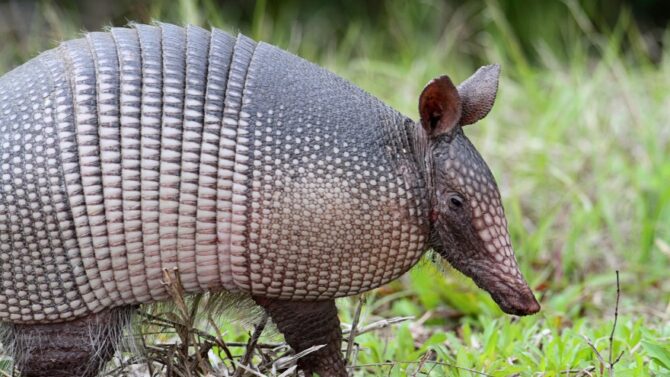The word “armadillo” is Spanish for“little armored one,” which perfectly describes these strange-looking creatures.
Armadillos have keratinous plates covering their heads, back, legs, and tails.
They belong to the Dasypodidae, a family of the only living mammals that have a shell.
However, contrary to popular belief, not all armadillos can actually encase themselves in shells.1
Interestingly, of all the 20 varieties of armadillo, all except one live in Latin America.
The average length of the armadillo is 30 inches, although this can vary depending on the species.
For instance, the pink fairy armadillo measures only 5 to 6 inches, while the giant armadillo can grow up to 59 inches.
Armadillos can weigh from 120 grams to 54 kilograms, depending on the species and environmental conditions.
So, what do armadillos eat?
Armadillos are omnivorous, meaning they consume both plants and animals. They have a diverse diet that includes earthworms, arthropods, insects, and their larvae. In addition to bugs, they also eat small vertebrates, amphibians, and, sometimes, fruits.
Continue reading to gain more insight into the armadillo’s diet and eating habits.
A Closer Look at an Armadillo’s Eating Habit
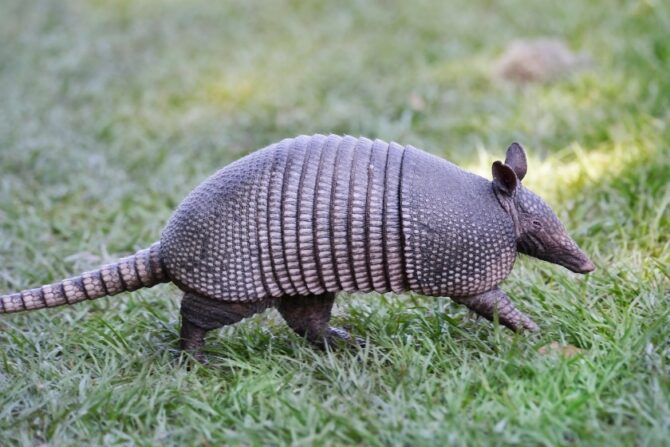
Armadillos are classified as omnivorous animals, meaning they can feed on almost everything.
While they often prefer eating insects, these armored mammals would never miss a chance to eat some fruits.
Occasionally, armadillos may eat eggs and smaller animals, although this rarely happens.
These critters use their front claws to dig below the ground while looking for tasty bugs, which explains why their environment is usually filled with holes.
Once the armadillos leave the area, these holes often become homes for other small animals.
As we mentioned earlier, armadillos delight in eating insects, and more than 90 percent of their diet consists of insects (like ants and termites) and their larvae.2
While armadillos have been caught feeding on some fruits, vegetation, and small invertebrates, these are not their primary diet.
What Do Armadillos Eat?
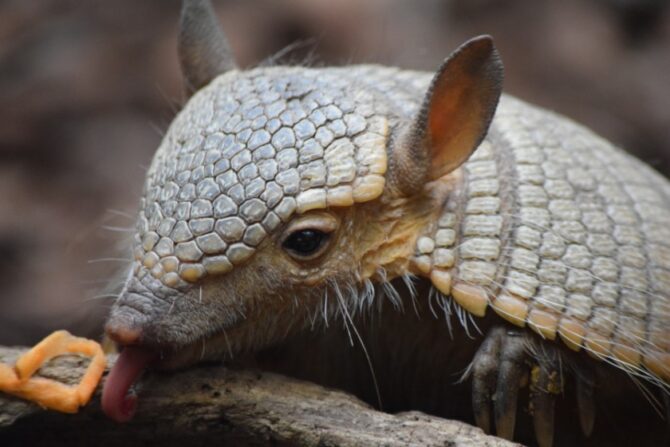
With such a bizarre yet alluring physique, it’s normal to wonder what these little critters eat.
The short but sweet answer is a bit of everything! Armadillos feed on both animals and plants.
Their diverse diet mainly includes seeds, ants, termites, grub, larvae, snails, earthworms and other worms, spiders, butterflies, rats, lizards, eggs, fruits, tubers, fungi, and, occasionally, carrions.
Do All Species of Armadillos Eat the Same Thing?
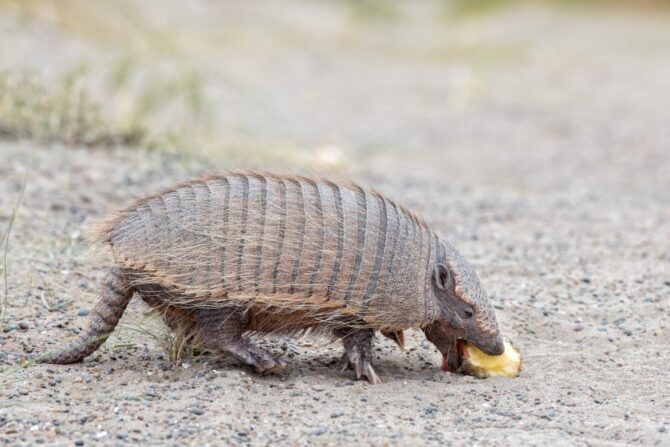
The armadillos are grouped under the Dasypoda family, which is further divided into three subfamilies: Dasypodidae, Tolypeutinae, and Euphractinae.3
There are 20 armadillo species, and they all instinctively eat the same diet, except for three species, which exclusively feed on ants and termites.
Where Do Armadillos Find Their Food?

Armadillos are very skilled burrowers, thanks to their short legs equipped with curved, sharp claws.
These features help them dig and burrow through the ground like moles.
When active, armadillos use their puissant claws to dig several burrows but don’t nest in them.
Rather, they dig holes in search of a bountiful supply of insects, such as ants and termites.
When they find some insects, these little armored mammals use their long, sticky tongue to pull out these invertebrates from their tunnels.
Unfortunately, armadillos have poor eyesight, which hinders their hunting.
However, they make up for this defect with their excellent sense of smell.
When Do Armadillos Eat?
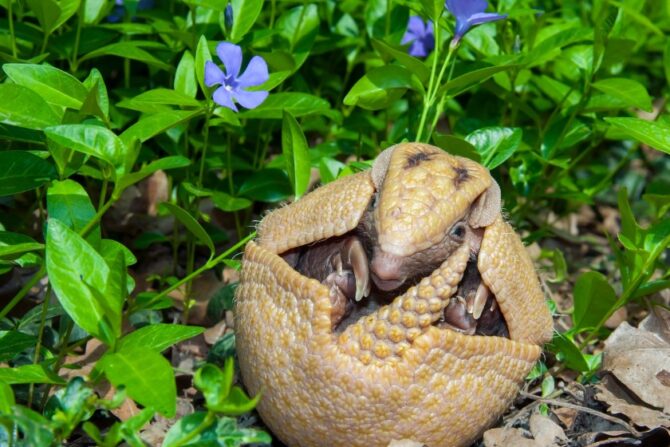
Virtually all armadillo species are nocturnal, crepuscular, or both; they feed mostly at night.
The nine-banded armadillo, for instance, is both nocturnal and crepuscular. This species can be found active on cloudy days.
However, the armadillo’s activity depends on the atmospheric temperature, as they usually become more diurnal when the weather is cooler.4
One species that tends to be mostly diurnal is the six-banded armadillo.
How Often Do Armadillos Eat?
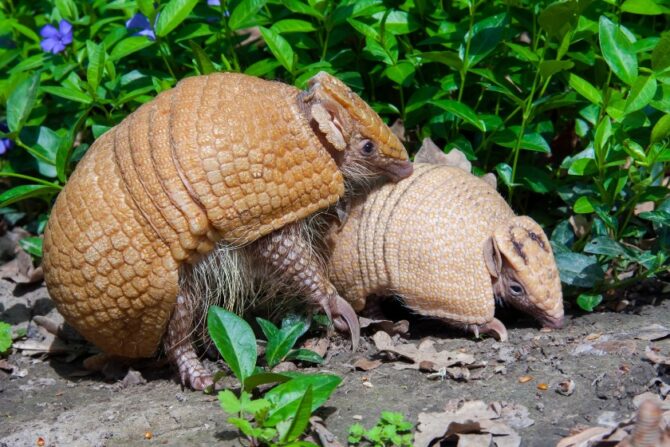
Armadillos sleep for 16 hours daily and use the remaining hours foraging for food.
However, nine-banded armadillos are opportunistic feeders, meaning they will eat whatever is available, whenever it’s available.
When they find a food source, they will eat as much as they can, but they will often pause to evaluate the quality of the food before continuing to eat.
This is because they need to make sure that they are getting enough nutrients to survive.
Where Do Armadillos Fit in the Animal Food Chain?
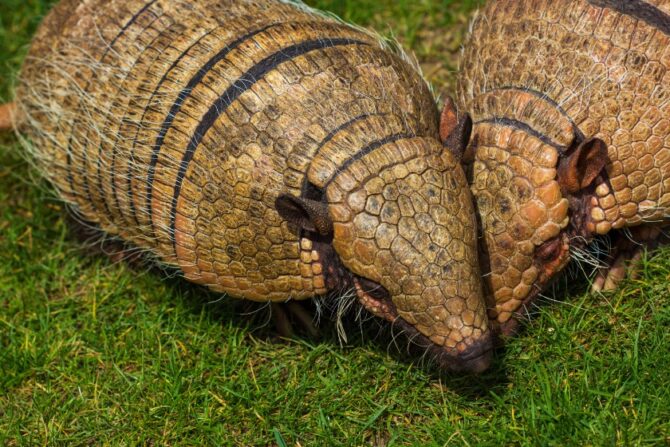
Armadillos are essential in the animal food chain as both prey and predator.
These critters are a source of food for animals like snakes, jaguars, dogs, and even humans.
As a result, they promote the continuity of these animals.
However, armadillos also feed on various invertebrates, like insects, worms, and larvae, thereby controlling the populations of these organisms.
What Should Armadillos Not Eat?
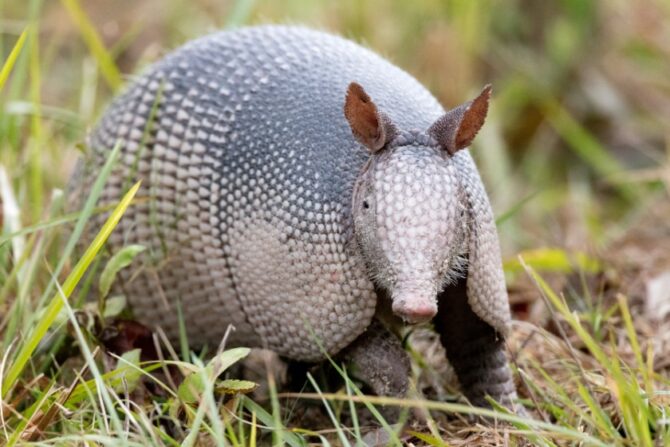
Armadillos are non-picky and very opportunistic when it comes to their diets, so fruits, plants, insects, vegetables, and even carrion will easily fit into their menu.
However, for armadillos that are kept in captivity or those undergoing rehabilitation due to injury, it is necessary to remember that these critters do not have specialized teeth to chew, crush, shred, or mince their food.
Therefore, it’s important to serve them deboned meat and fish and chopped raw fruits and vegetables.
This helps reduce the risk of choking risk and makes their meals easier to eat and digest
What Do Armadillos Eat As Babies?
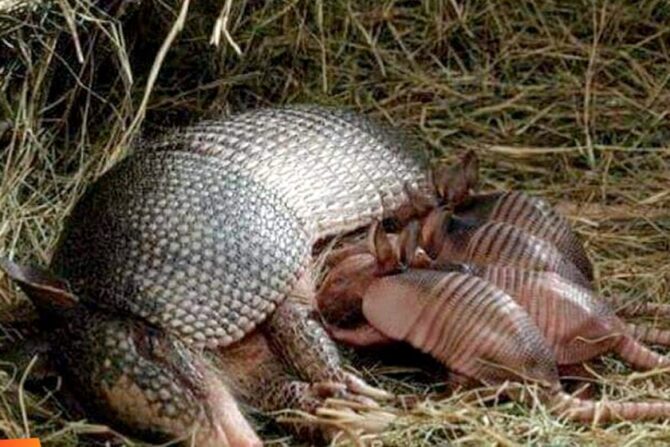
Armadillo offspring are called pups.
The nine-banded armadillo in North America is known to nearly always give birth to four identical quadruplets.5
Female armadillos dig burrows where they birth their pups and care for them.
Depending on the species, the first two to three weeks or months are crucial for the newborn pups.
During this period, the main food source for pups is their mother’s milk.
As soon as they mature enough, the young armadillos emerge from the burrow to learn how to forage for their food.
However, they will still breastfeed until they are fully weaned.
For the nine-banded armadillo, weaning is usually completed around eight weeks after birth.
How Much Do Armadillos Eat?
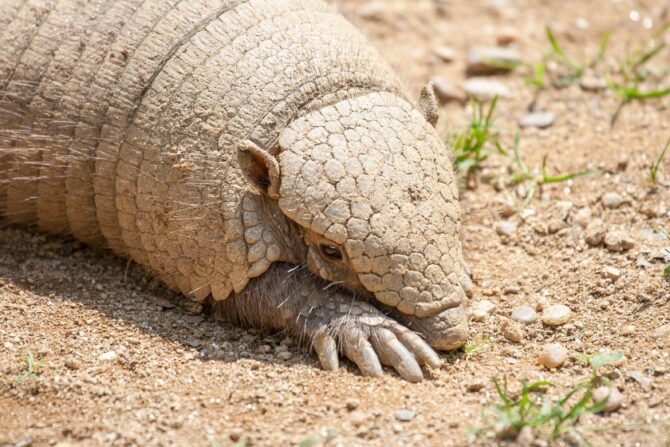
Armadillos come in different shapes and sizes.
The pink fairy armadillo, which is the smallest armadillo, is only about the size and weight of a mobile phone (120 g)!
On the other hand, the giant armadillo can weigh almost as much as the average human (54 kg).
Considering these two factors, it is very complicated to determine what an average daily portion size would look like for a wild armadillo.
However, all armadillos are adventurous in their feeding behaviors.
When they stumble on an abundant food source, like large roadkill or a huge termite mound, they will instinctively try to eat as much as possible.
This sating behavior helps the armadillos survive and endure times of food scarcity.
Frequently Asked Questions
Do Armadillos Eat Ants?
The armadillo’s diet comprises mostly insects.
Among the vast majority of insects they eat, ants are a favorite.
Armadillos eat ants a lot, and they have long claws used for digging the earth for ants and other insects.
What Is Armadillos’ Favorite Food?
Insects are armadillos’ favorite delicacy.
Approximately 90 percent of the armadillo’s diet is made up of insects and their larvae.
Armadillos also feed on scorpions, earthworms, spiders, and other invertebrates.
What Is the Habitat of Armadillos?
Armadillos are productive diggers.
As they dig many burrows in search of food, these critters will only survive in areas where the soil is easy to dig.
Several other wildlife species use and benefit from abandoned armadillo burrows.
Do Armadillos Eat Every Day?
Armadillos do not go into a state of hibernation and, therefore, must eat daily.
Wrapping Up
Although weird-looking, armadillos are peaceful and easy-going animals that play a major ecological role as both prey and predator.
Their diverse diet, which includes insects, fruits, plants, and even carrion, allows them to adapt to various environments and contribute to the balance of the ecosystems they inhabit.
So, the next time you come across an armadillo foraging in the wild, appreciate its unique appearance and the important role it plays in maintaining our ecosystem.
References & Notes
- Armadillos. National Geographic
- Armadillo (Dasypus novemcinctus). University of Nebraska
- Armadillo – Burrowing, Nocturnal, Armor. Britannica
- Armadillo. San Diego Zoo Animals
- Nine-Banded Armadillo. National Wildlife Federation
